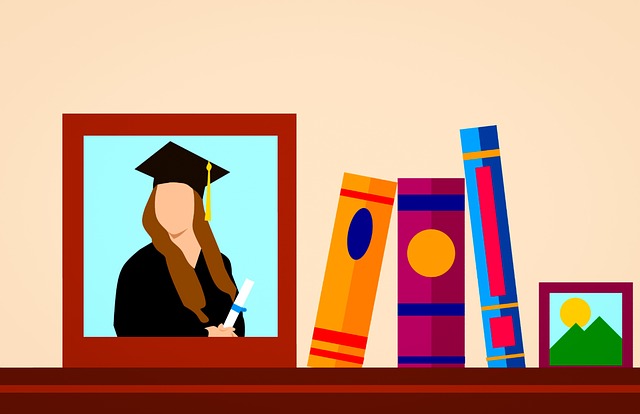By Tim Lambert
Women’s Education in the Ancient World
There have always been some educated women. In the past, generally, upper-class women were well-educated. Middle-class women often had some education. But poor girls, like poor boys, had little or no access to education. Sumer was the world’s oldest civilization. It arose in what is now Iraq at about 3,500 BC. In Sumer, some women learned to write and some were scribes.
In Ancient Egypt, some girls were taught to read and write. Upper-class women were often well-educated. There were some women doctors in Ancient Egypt. Merit Ptah was a famous woman doctor who lived around 2,700 BC. The Ancient Egyptians had a goddess of reading, writing, and arithmetic. Her name was Seshat.
In Ancient Greece, too, some girls were taught to read and write. Women from wealthy families are often well-educated.
In Rome, many girls were taught to read and write at school. Upper-class women were often educated.
Women’s Education in the Middle Ages and Renaissance
During the Middle Ages, girls from wealthy families were educated at home. Nuns were often highly educated. Among female scholars of the Middle Ages were Hildegard of Bingen and Christine de Pizan.
In the 16th century, girls did not go to grammar schools. However, girls from well-off families were usually educated at home. Tutors taught upper-class girls. Two of Henry VIII’s wives, Catherine of Aragon and Catherine Parr, were well-educated. (Catherine Parr was a famous writer) .Girls learned music, dancing, and needlework. They also learned to read and write. They might also learn languages like Greek and Latin, Spanish, Italian, and French.
Catherine of Aragon and Catherine Parr were both highly educated women. Catherine Parr was a noted writer.
Middle-class girls were taught reading, writing, arithmetic, and skills like sewing by their mothers. Merchants’ daughters were very often taught to run their fathers’ businesses. Some women were taught to read by their husbands or the parish priest.
In England in the 17th century, boarding schools for girls were founded in towns. Girls were taught writing, music, and needlework. In Italy, in 1678, Elena Piscopia became the first woman in the world to gain a Ph.D.
In the 1700s, girls from well-off families went to boarding schools. Other girls sometimes went to dame schools where they were taught to read and write. Also, in some towns, there were charity schools called blue coat schools because of the colour of the uniforms.
In the 17th century, the philosopher Anna Maria van Schurman (1607-1678) was a leading advocate of women’s education.
Women’s Education in the Modern Era
In the early 19th century, in Britain, the churches provided a rudimentary education for many poor children. In 1811, the National Society for Promoting the Education of the Poor was founded by the Church of England to provide schools. In 1814, the British and Foreign Schools Society was founded by non-conformists (Protestants who did not belong to the Church of England).
It was not until 1870 that the state began to provide schools in Britain. In 1880, school was made compulsory for 5 to 10-year-olds. However, school was not free, except for the poorest children, until 1891 when fees were abolished. From 1899, children were required to go to school until they were 12.
Meanwhile, in the USA, three women gained bachelor’s degrees from Oberlin College in 1841. They were the first American women to gain bachelor’s degrees. The first woman in the USA to gain a Ph.D. was Helen Magill White in 1877. (Her PH.D. was in Greek). The first woman in the USA to gain a Ph.D. in mathematics was Winifred Edgerton Merrill in 1886.
In 1866, Lucy Hobbs Taylor became the first American woman to graduate from a dental college. In 1870, Ada Kepley became the first American woman to graduate from law school.
The first woman to qualify as a doctor in the USA was British-born Elizabeth Blackwell in 1849. In 1859, she became the first woman to have her name entered in the British General Medical Council’s medical register. Elizabeth Garrett Anderson followed in 1865.
In Britain, women were first allowed to attend university in 1868, but at first, they were not awarded degrees; they were only awarded a certificate of proficiency. Women in Britain were first awarded degrees in 1880. In 1888, Eliza Orme became the first British woman to gain a law degree. In 1895, Lilian Murray was the first woman in Britain to qualify as a dentist. In 1898, Ethel Charles was the first woman in Britain to qualify as an architect.
Education for the working class greatly improved in Britain in the 20th century. In 1918, the minimum age for leaving school was raised to 14. In 1948, it was raised to 15 and in 1973 to 16. In the 1960s, there was a big expansion of higher education in Britain, and many new universities were founded. Meanwhile, the Open University began in 1969. In the late 20th century, women had far more opportunities for education and training than ever before.
In India, Savitribai Phule 1831-1897 was a pioneer of girls’ education. She was the first female teacher in India. She opened several schools for girls with her husband.
Unfortunately, in parts of the world, girls still face difficulty gaining an education. Malala Yousafzai is a campaigner for girls’ education. She was born in Pakistan in 1997 and was awarded the Nobel Peace Prize in 2014.

My YouTube video about the history of women’s education
Last revised 2025